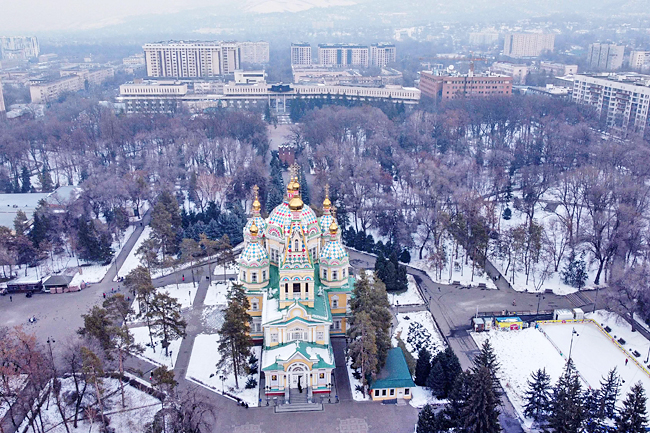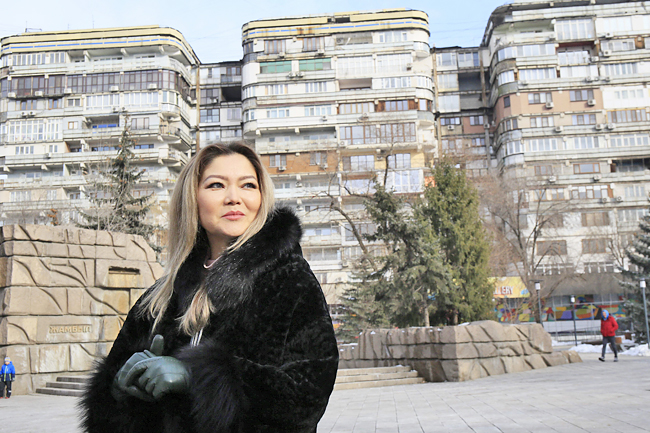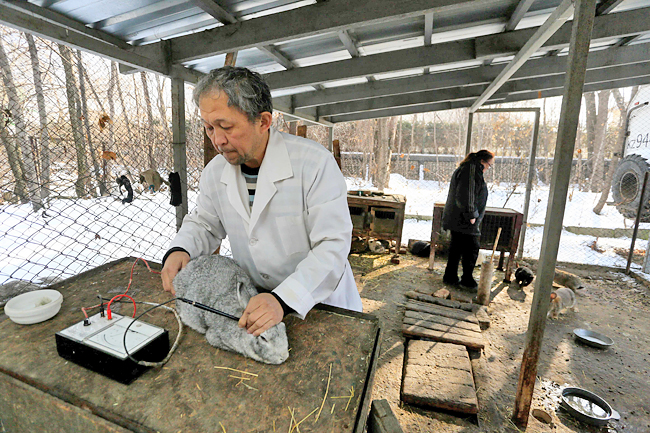ALMATY, KAZAKHSTAN (AFP) – When a devastating earthquake and aftershocks struck Turkiye and Syria this month, Klara Imangalieva – who lives in the Central Asian country of Kazakhstan – realised she had to move.
“We are also in danger,” said Imangalieva, a resident of Almaty, Kazakhstan’s largest city dominated by the snow-capped Tian Shan mountains.
“I’m looking to move into a single-storey house to at least have a chance of surviving in the event of an earthquake,” said Imangalieva, who lives on the ninth floor of a high-rise building.
Almaty, which has a population of around two million people, sits in a high seismic hazard zone in southeastern Kazakhstan.
Small tremors are fairly common in the country although there has not been a major quake in living memory.
Three historic earthquakes hit Almaty – then known as Verny – more than a century ago in 1887, 1889 and 1911. Each time the city was heavily destroyed and had to be rebuilt.
The horrific earthquake and aftershocks that shook Turkiye and Syria in early February, killing more than 45,000 people, stirred fears about a possible new disaster in the former Soviet country and drew fresh attention to its past and current building practices.





Architect Almas Ordabayev says it is unclear how many buildings in Almaty would be able to withstand powerful shocks, singling out early Soviet-era houses as a particular concern.
“All the buildings built before the end of the 1950s which have not been reinforced will not survive an earthquake like the one in Turkiye”, said 84-year-old Ordabayev.
Ordabayev also raised concern about the construction practices in the post-Soviet era.
“Only a strong earthquake will reveal what will happen to buildings built in the 1990s by corrupt and criminal companies,” he said.
Ordabayev expressed hope that the catastrophe in Turkiye and Syria could serve as a cautionary tale.
The scale of the destruction has ignited fury in Turkiye, which has multiple fault lines and a history of major tremors, over poor construction standards.
“I hope that the earthquake in Turkiye will serve as a lesson to our authorities and builders,” Ordabayev said.
According to estimates, more than five million people in Kazakhstan live in a high seismic zone covering over 11 per cent of the country’s territory. Deputy head of Almaty’s Institute of Seismology Nursaren Uzbekov said around 40,000 earthquakes had been recorded in the country over the past five years.
On average, between nine to 15 quakes can be felt each year, he added.
Uzbekov’s institute, founded in 1976, studies vibrations deep inside the Earth and the behaviour of animals such as snakes, birds, rabbits and fish. A network of seismic stations monitors real-time ground motion in Kazakhstan and neighbouring countries.
Grigory Kochkarov works at one such station perched in the mountains overlooking Almaty.
“If there is an earthquake, we immediately see it on the screen, receive an audible signal and in ten minutes maximum, we transmit the information”, he told AFP.
The station’s seismographs are sensitive to minute vibrations and can detect activity occurring 3,000 kilometres away, he said.
He demonstrated long sheets of white paper – some of the seismograms recorded by the observatory date back to the 1930s.
Kochkarov then opened a heavy door leading to a side chamber hewn out of the earth. Inside there was a long-corridor – where “normally, nobody goes” – containing sensitive measuring equipment.
But experts say that the energy-rich country does not have enough seismic stations and the majority of seismographs date back to the Soviet-era.
Other countries in former Soviet Central Asia also fear that a destructive earthquake could wreak havoc sooner or later.
After the earthquakes in Turkiye and Syria, authorities in mountainous Kyrgyzstan pledged to assess the seismic resilience of high-rise buildings.
In Uzbekistan, an earthquake destroyed much of the capital Tashkent in 1966, and Soviet authorities had to rebuild the city.
Pensioner Nuriddin Ibragimov said he was 13 when the tragedy struck.
“Tashkent was in ruins,” he said, noting that the Soviet authorities covered up the real death toll.





